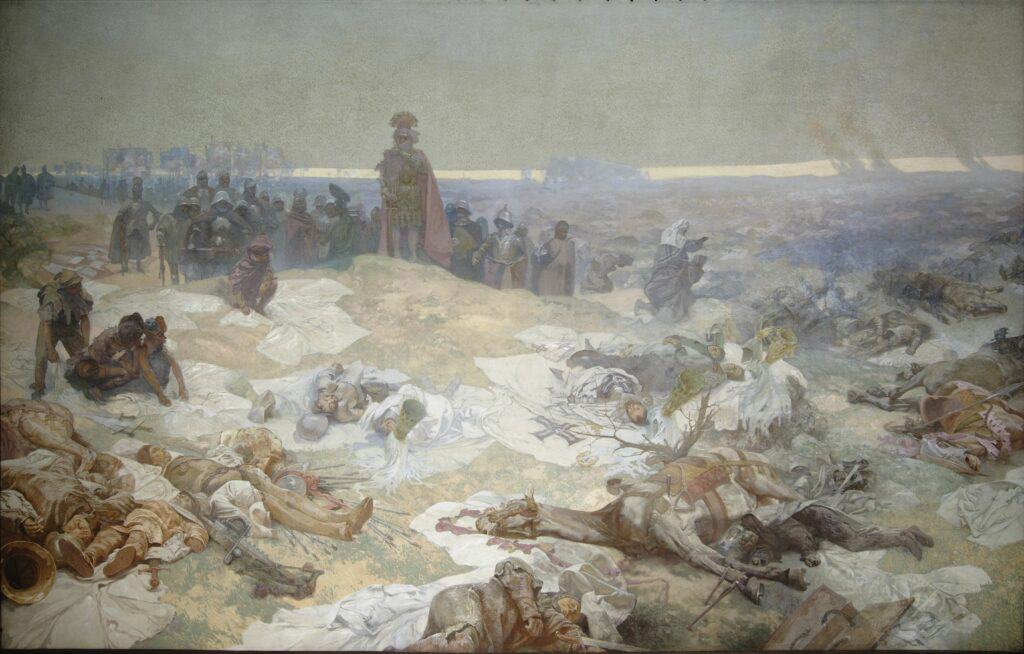North Slavic reciprocity
In the 12th century, during the Crusades, the Order of German Knights settled on the territory of the then still Slavic Prussia. Its original task was to spread the Christian faith, but the Order also pursued its own power goals and got into disputes with its neighbours. In 1409, war broke out between Prussia and Lithuania. Poland became Lithuania's ally, as the two countries were also linked by family ties. The decisive battle took place at Grunwald on 15 July 1410. Mercenary corps from Bohemia and Moravia came to the aid of the Poles and Lithuanians. They were led by the Moravian knight Jan Sokol of Lamberk and probably included Jan Žižka of Trocnov.
The painting represents the site of a bloody battle at dawn the next day. The Order of German Knights was defeated and the Polish King Vladislav II. Jagiellon, accompanied by his retinue, came to see his victory.
Under the hill lies Ulrich von Jungingen, the fallen Grand Master of the Teutonic Knights, with a cross on his chest. In addition to the many slain enemies, the king sees the immense sacrifices his warriors have had to make. Overwhelmed by the needless death, he covers his face in pain.
In the background, the Orthodox Patriarch blesses all the fallen, especially the Smolensks who stood in the front ranks. The numerous white cloaks with black crosses covering the battlefield signify that the power of the Order has been broken and Poland and Lithuania have defended their freedom. On the left, a figure in a crusader's cloak kneels and behind him stands a warrior in armour and a broad helmet. Directly behind him is Jan Sokol of Lamberk, and to the left beside him is Jan Žižka of Trocnov, with a slip over his right eye.
It is typical of Mucha that he does not include this great victory of the Slavs in the Slav Epic as a celebration of a victorious battle, but as an example condemning violence and serving as a call for the peaceful coexistence of nations.
Vita App/gnews.cz-Jana Černá_07
https://mk-epopej-pruvodce.netlify.app/dospely/10



